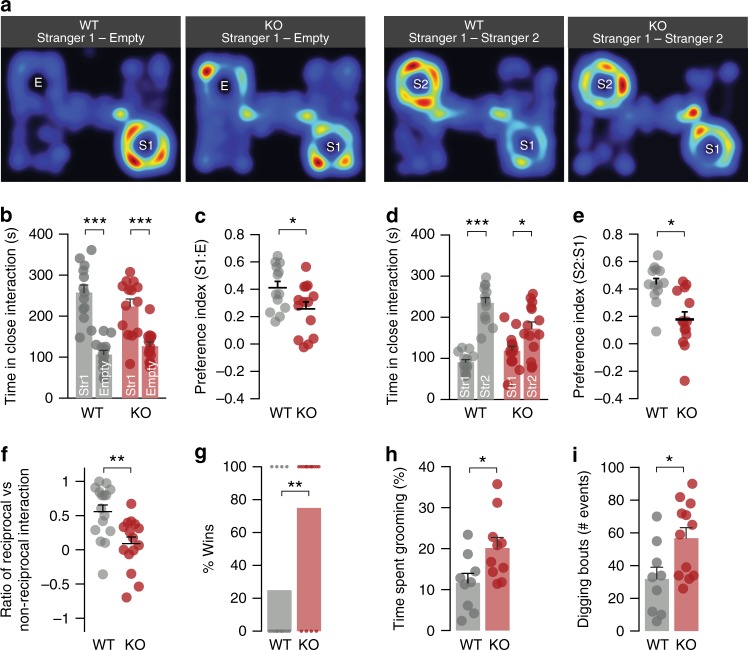Fig. 8.
Gprasp2−/y mice display social and ASD-like behavioural alterations. a Representative heat map images from ‘Stranger1–Empty’ and ‘Stranger1–Stranger2’ from three-chamber social test trials for Gprasp2−/y mice and littermate controls. b, c Gprasp2−/y interact with ‘Stranger’ stimulus mice (b), but display reduced preference for social interaction when comparing with WT mice (c); WT n = 13; KO n = 14; two-tailed t-test. d, e Gprasp2−/y display reduced total time interacting with social partners (c) and reduced preference index for ’Stranger2’ (e) when comparing to WT controls; WT n = 13; KO n = 14; two-tailed t-test. f In the social dyadic test, Gprasp2−/y show decreased ratio of reciprocated vs non-reciprocated social interactions against C57BL6 stimulus mice; WT n = 16, KO n = 15, two-tailed t-test. g In the tube test for social dominance, Gprasp2−/y mice displayed greater percentage of win trials against WT controls; WT n = 16, KO n = 16; chi-square test. h, i Gprasp2−/y mice display increased stereotypical behaviours measured as time spent grooming (h) and frequency of digging bouts (i) during a 30-min session; WT n = 9, KO n = 10; two-tailed t-test for (h) and two-tailed Mann–Whitney test for (i). All data are presented as means ± s.e.m. Statistical significance: *p < 0.05, **p < 0.01 and ***p < 0.001

